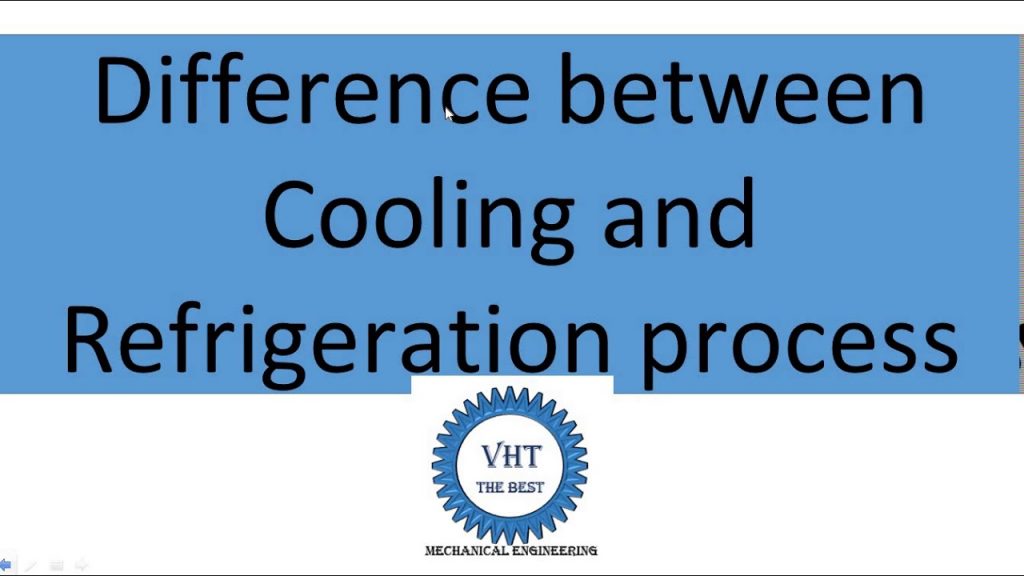The air conditioning and heating difference are the basic description which describes the condition of air within a building. The air conditioning involves using mechanical systems and also can be called as a machine while cooling entails using chemical procedures. Basically, the air conditioner is used to cool the temperature of the atmosphere within the room. On the flip side, the refrigerant is used to keep the standard temperature of the atmosphere.
Air Conditioning And Refrigeration Difference

The air conditioning is much more popularly known as the refrigerant since it utilizes a collection of chemical methods. The most crucial part of an AC unit is that the evaporator or condenser. The ac term in essence only covers any contemporary technological system that modifies the physical condition of the atmosphere by its own dehumidification, heating, heating, and coolingsystem. In the air conditioning and cooling gap it is quite evident that the former uses the steam coming from the boiler to warm up the atmosphere inside the room and it by means of the evaporation process removes the moisture from the moisture. The condenser on the other hand heats up the refrigerant and it transports it to the refrigerant through a string of contacts.
Air Conditioning And Refrigeration Difference
From the air conditioning and heating gap the term Thermal Energy defines what happens when the moisture from the air passes through the thermal energy collector. As the moisture moves through the collector it gathers up thermal energy and transforms it into a gas form. The gas types are then released and circulate through the condenser coils. This method is called convection and this is what causes heat. The process known as air conduction induces the colder air near the condenser to become colder than the warm air close to the evaporator.
Air Conditioning And Refrigeration Difference
Since the condenser and compressor are on opposite sides of the evaporator, the liquid effluent passes from the condenser via the intake manifold into the compressor where it undergoes compression prior to being compressed into a gas type. After compression, then it returns to the evaporator where it is collected and stored until needed again. As soon as an ac unit is in operation, it operates on a closed circuit system. The circuit system of the air conditioning unit comprises the evaporator, condenser, and compressor.
Air Conditioning And Refrigeration Difference
Air conditioners have two kinds of cooling processes, namely compression and evaporation. Evaporation is also known as dry ice coolingsystem. Within this type of cooling procedure, the cool air is warmed by the renewable energy in the ambient atmosphere. Compression, however, is done by employing mechanical pressure in the compressor to draw hot air from your condenser. Compressed air has a greater temperature compared to the unconfined air since the compressors have lower temperatures.
Thermal energy in the air passes through a layer of fluid that contains energy. This latent heat energy transfers the heat energy into the air refrigerant. Air-conditioning refrigerants have a coiled-coil structure that has metallic whiskers that ease the transport of the thermal energy from its neighboring surroundings to the refrigerant. This transport of energy leads to the generation of heat energy in the form of cold air in the condenser coil and the generation of cold water vapor in the evaporator.
On the flip side, the compressed form of air conditioning refrigerant transfers heat energy to the AC compressor. This transfer of electricity causes the hot air rising from the compressor to be cooled before being pushed back into the condenser coil. The procedure for compression is completed with the help of an electric motor. Consequently, the AC compressor can also be known as an open-circuit or direct-vent appliance.
Among the best ways to cool a room or room in your house is through the utilization of an air conditioner/refrigerator mix. The installation of the AC/air osmosis system may be accomplished by the registered technician or you’ll be able to pick the setup by following directions provided by your AC installer. But, one has to remember that a proper installation of the heating and cooling system is only possible when both the components are working well. Hence, make sure that you give appropriate time and attention to the upkeep of your air conditioner or refrigerator.


